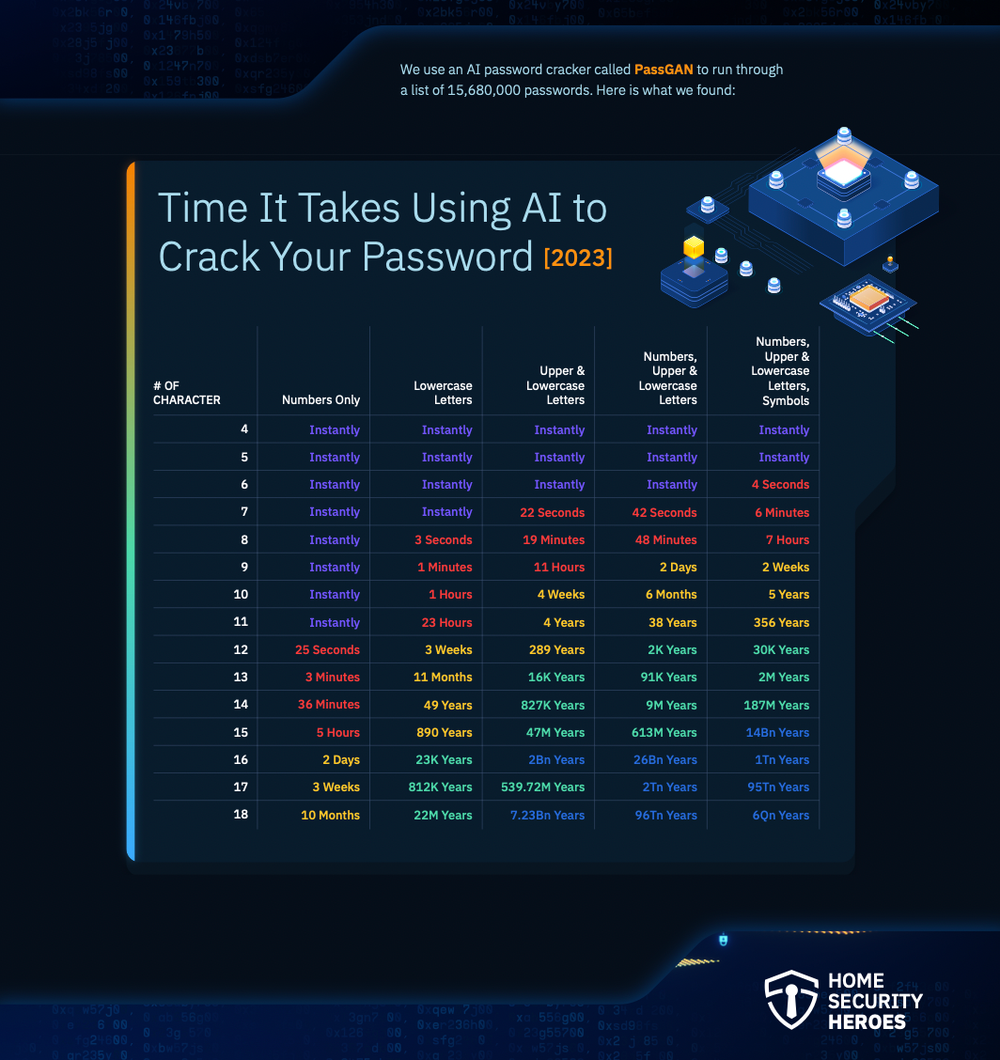AI Can Crack Most Common Passwords in Less Than a Minute — Here’s How to Set a Safe One
If your passwords have certain characteristics, they’re infinitely more vulnerable.
Opinions expressed by Entrepreneur contributors are their own.
In our ever-expanding digital world, passwords are an inevitability: email, apps, subscriptions and loyalty programs — nearly everything is designed to be secure behind a self-set code that permits entry. According to technology site TechCo, the average person has about 100 passwords, so it’s no surprise that when signing up for a new account, individuals can sometimes get lazy with word choice. However, there’s a new risk to password vulnerabilities: artificial intelligence.
A new report by Home Security Heroes found that 51% of common passwords can be cracked in less than a minute using an AI password cracker, and 81% can be cracked in less than a month.
Home Security Heroes used the AI password cracker PassGAN to run through a list of 15,680,000 passwords. The odds of AI decoding one’s password increase when a password has a minimal amount of characters and lacks variety (only using lowercase, only using numbers, etc.). Still, it found that it took PassGAN less than six minutes to crack a password of seven characters, even when it contained symbols.
Related: Elon Musk Says We Should Stop Rapid AI Development Right Now — Here’s Why

How to set a password that’s safe from AI:
According to Home Security Heroes’ findings, it takes AI significantly longer to crack a password with more characters and variety. In essence: The longer the password and the more letters, numbers and symbols you use, the safer it is from AI.
A password with 14 characters composed of upper and lower case letters, symbols and numbers takes AI an average of 187 million years to crack, as opposed to a password of seven characters composed of just upper and lower case letters — which takes AI an average of 22 seconds to crack.
Although it might be more time-consuming, if you want to ensure password security as AI technology advances, it’s best to keep your passwords at least 10 characters long, with some combination of upper and lower case letters, symbols and numbers.
Related: How AI Is Shaping the Cybersecurity Landscape — Exploring the Advantages and Limitations
In our ever-expanding digital world, passwords are an inevitability: email, apps, subscriptions and loyalty programs — nearly everything is designed to be secure behind a self-set code that permits entry. According to technology site TechCo, the average person has about 100 passwords, so it’s no surprise that when signing up for a new account, individuals can sometimes get lazy with word choice. However, there’s a new risk to password vulnerabilities: artificial intelligence.
A new report by Home Security Heroes found that 51% of common passwords can be cracked in less than a minute using an AI password cracker, and 81% can be cracked in less than a month.
Home Security Heroes used the AI password cracker PassGAN to run through a list of 15,680,000 passwords. The odds of AI decoding one’s password increase when a password has a minimal amount of characters and lacks variety (only using lowercase, only using numbers, etc.). Still, it found that it took PassGAN less than six minutes to crack a password of seven characters, even when it contained symbols.
The rest of this article is locked.
Join Entrepreneur+ today for access.
Already have an account? Sign In






